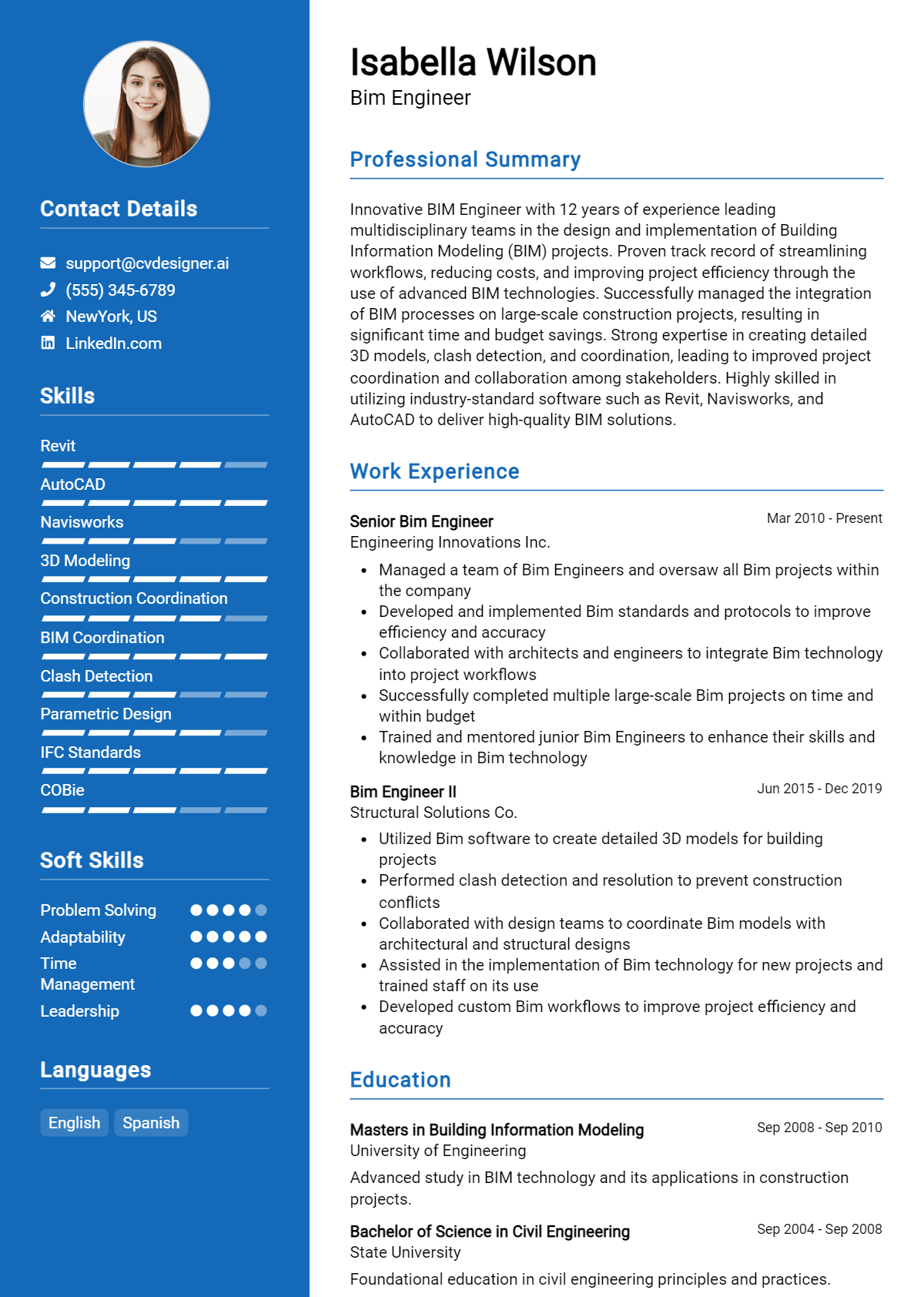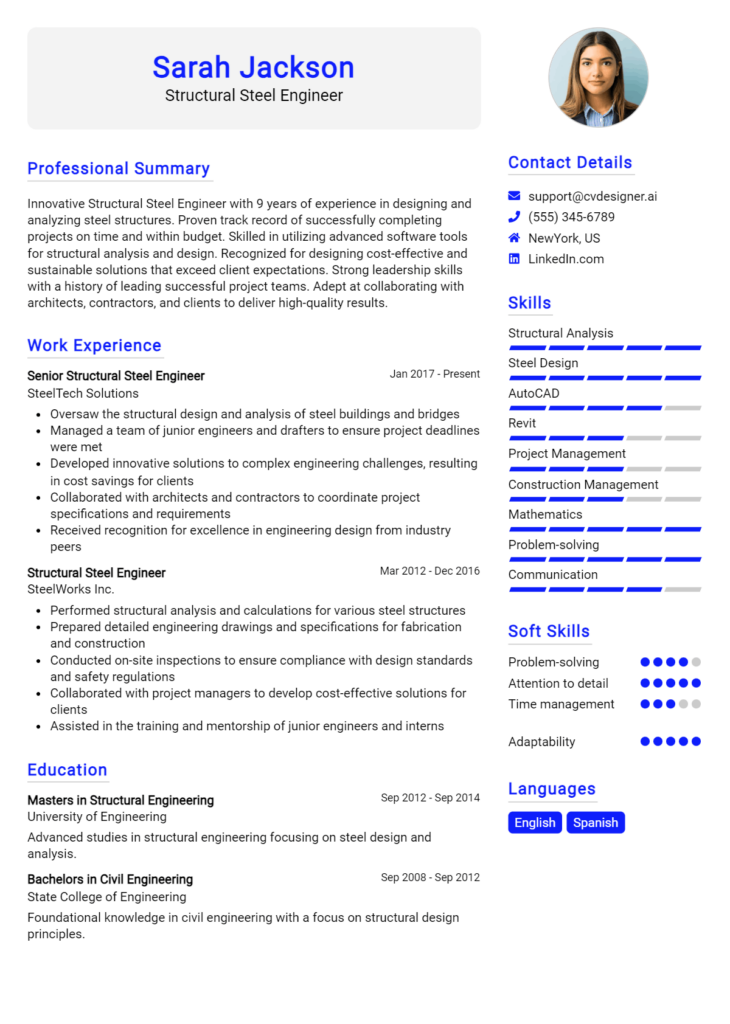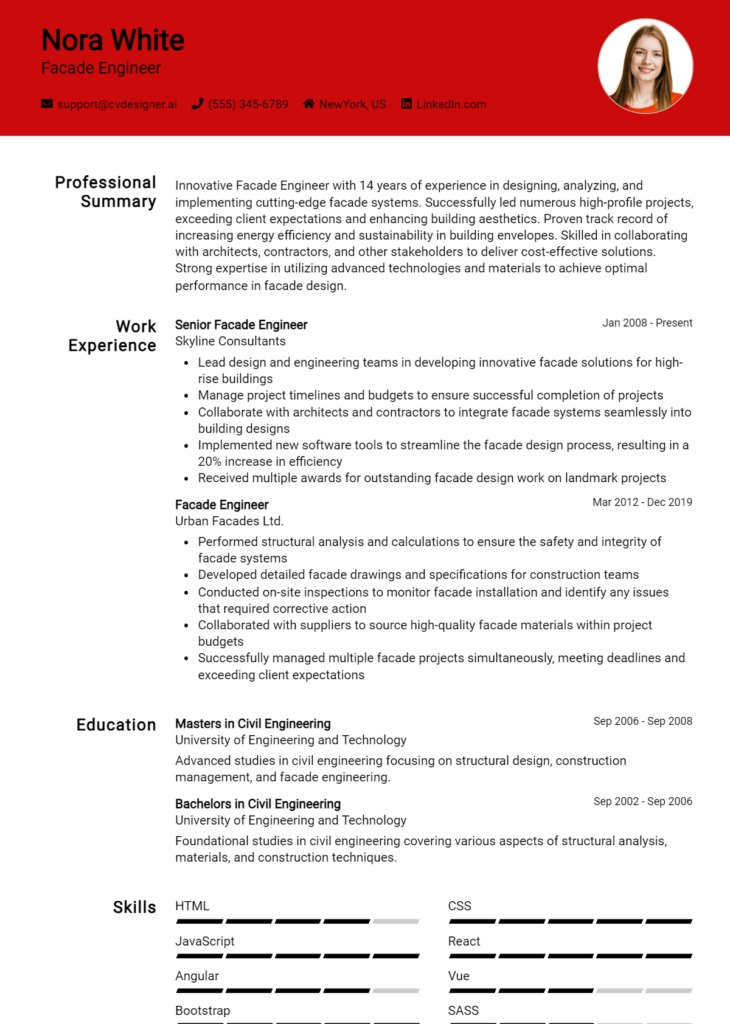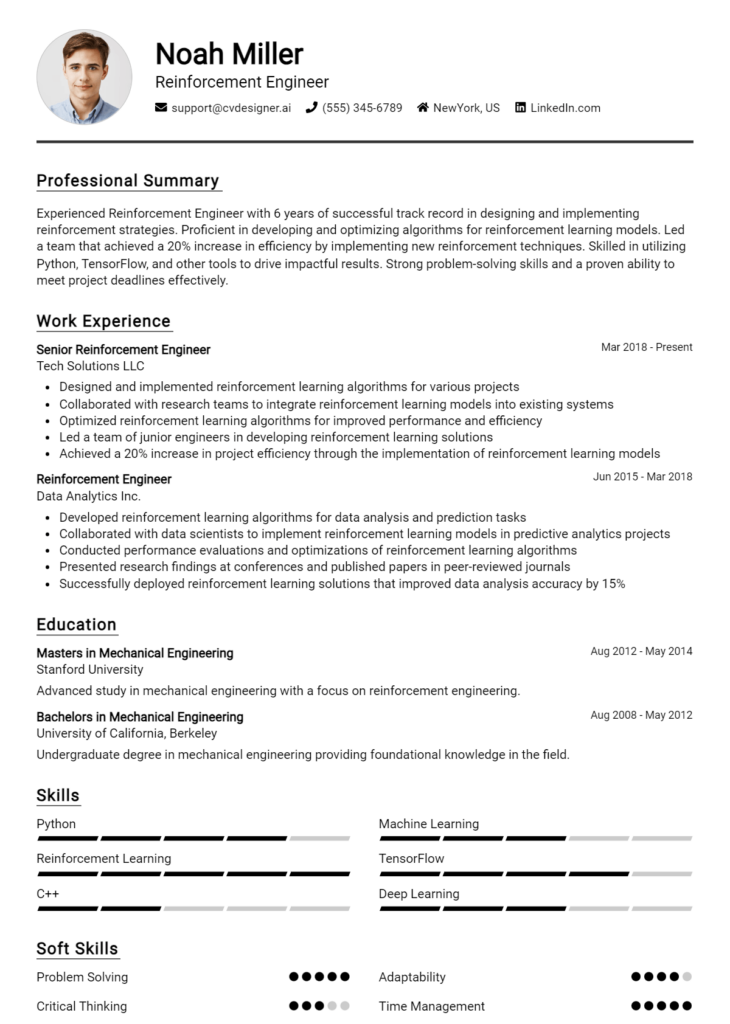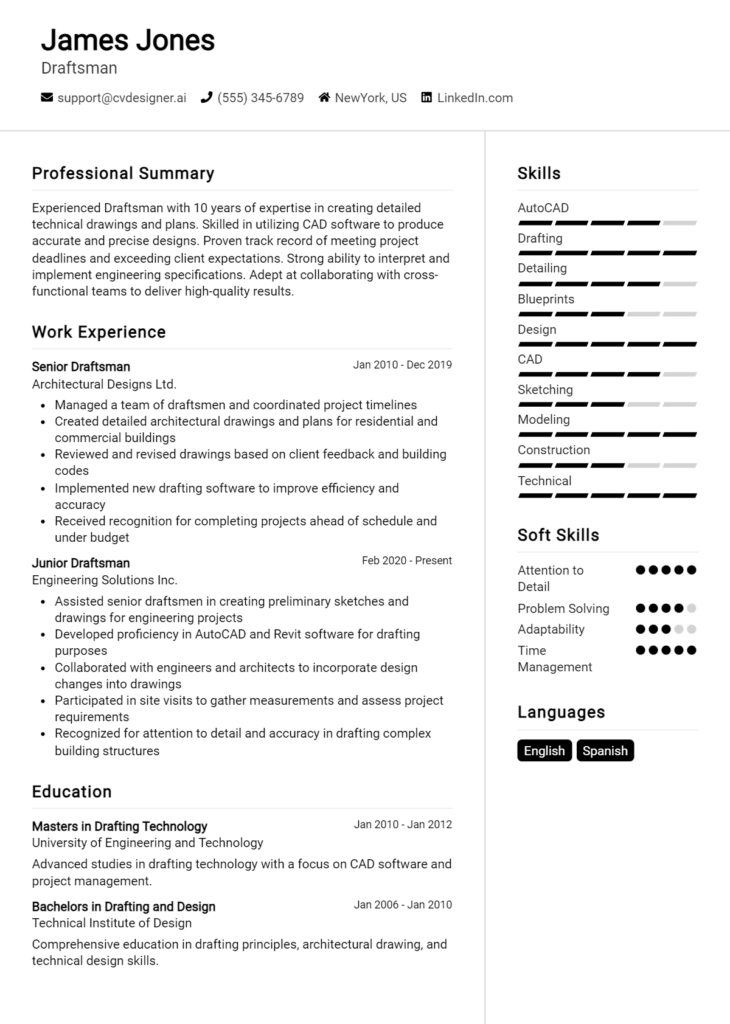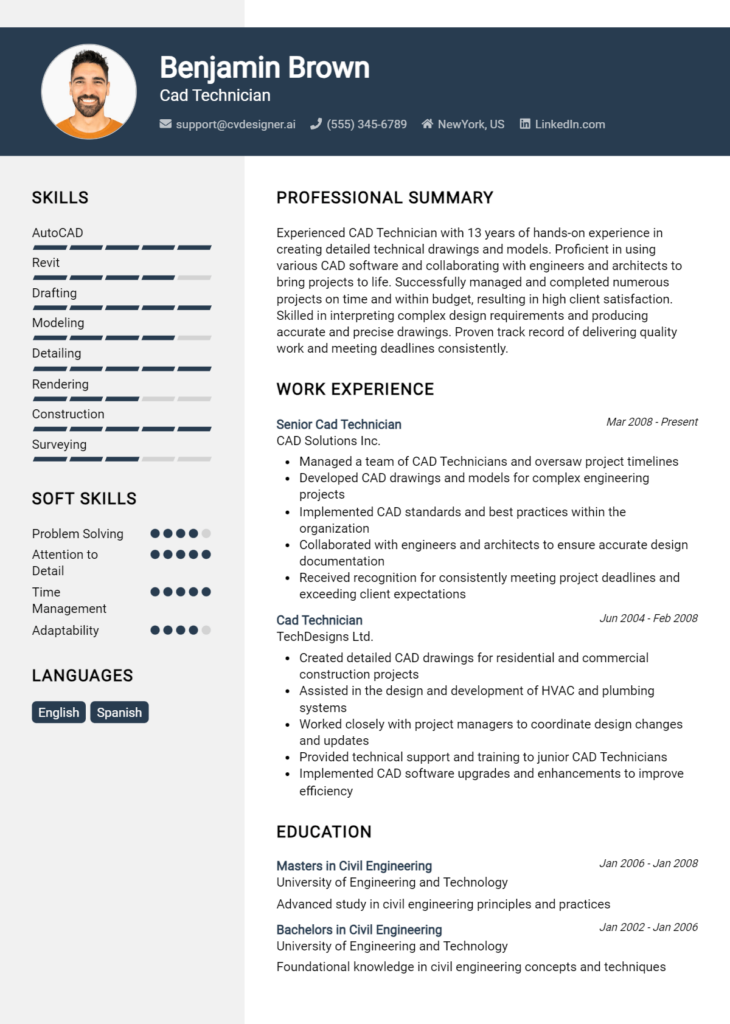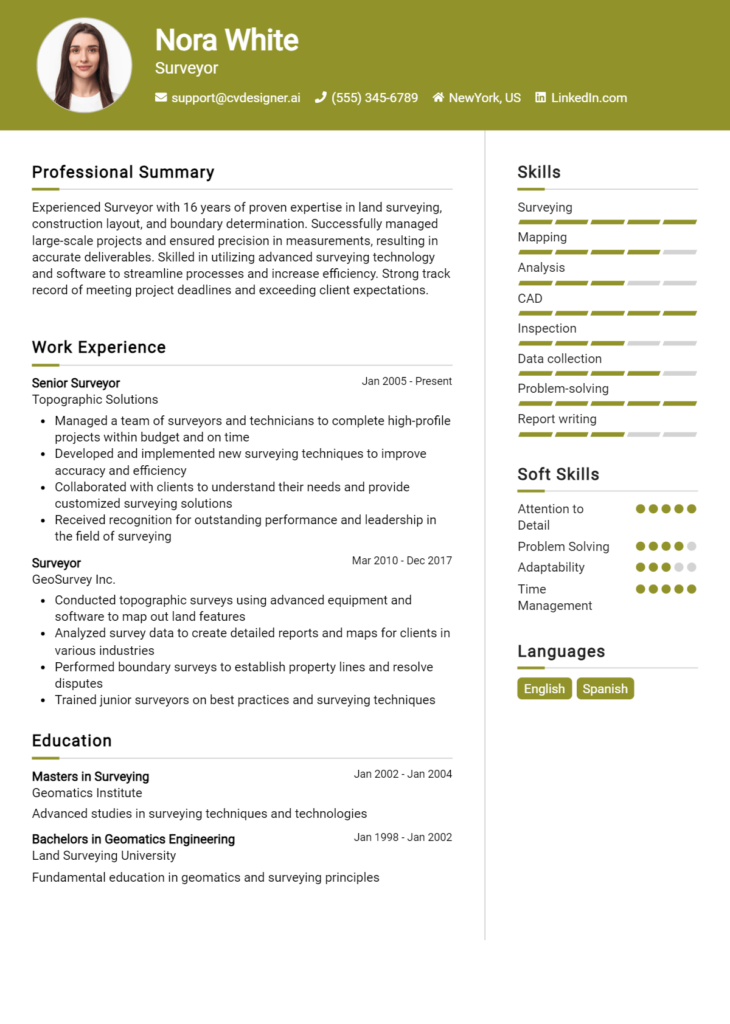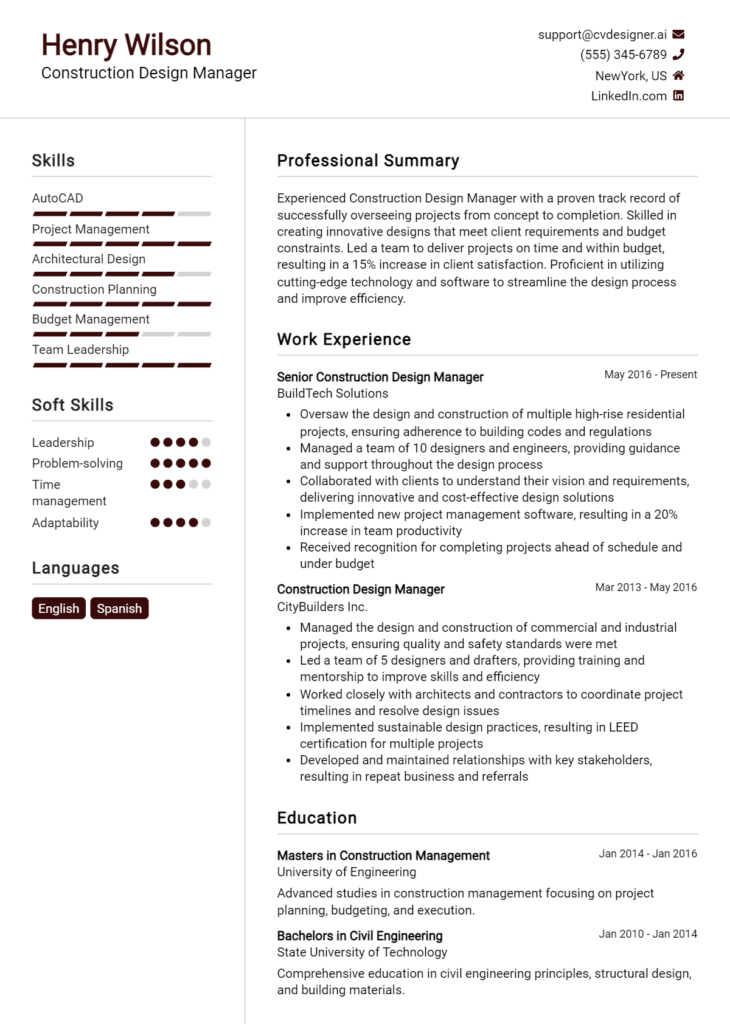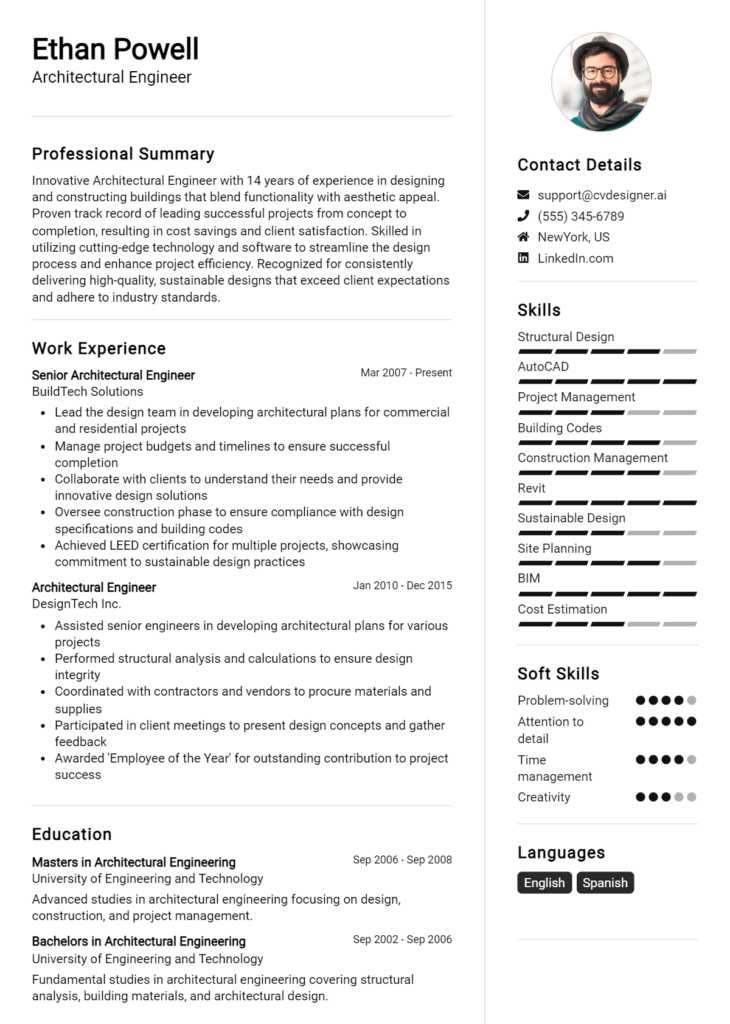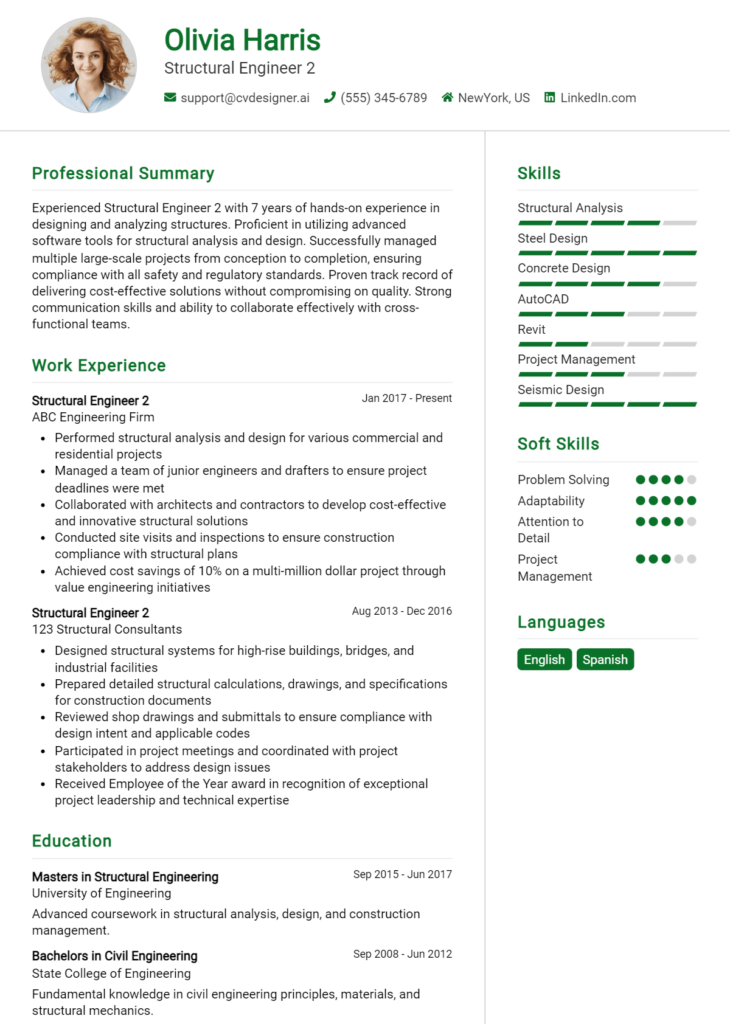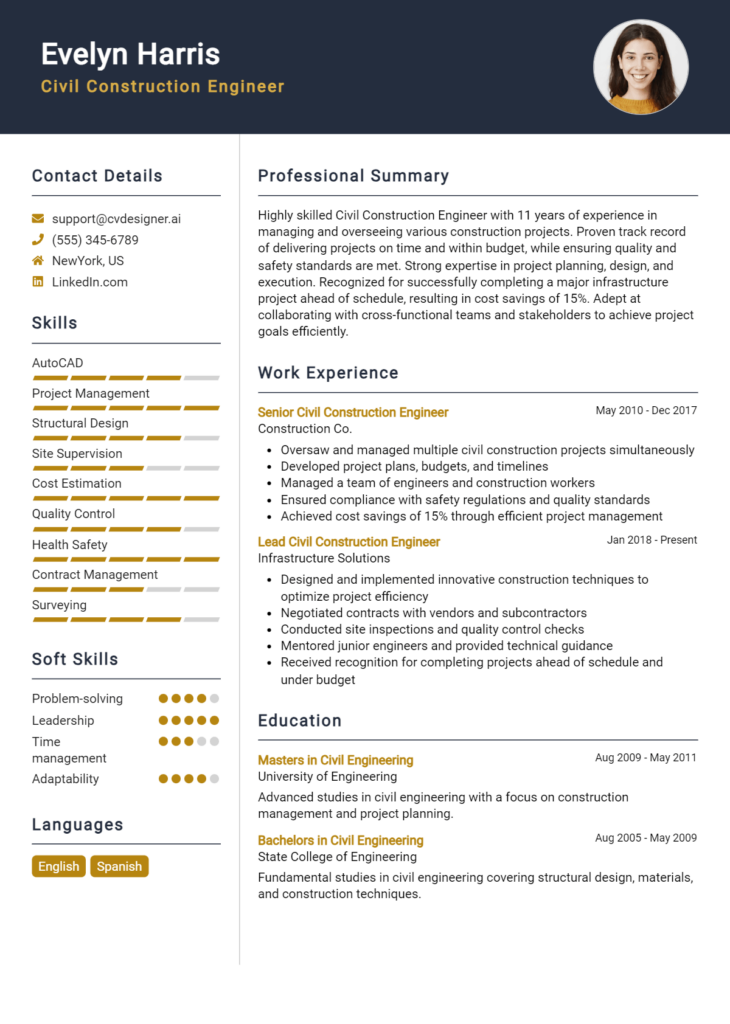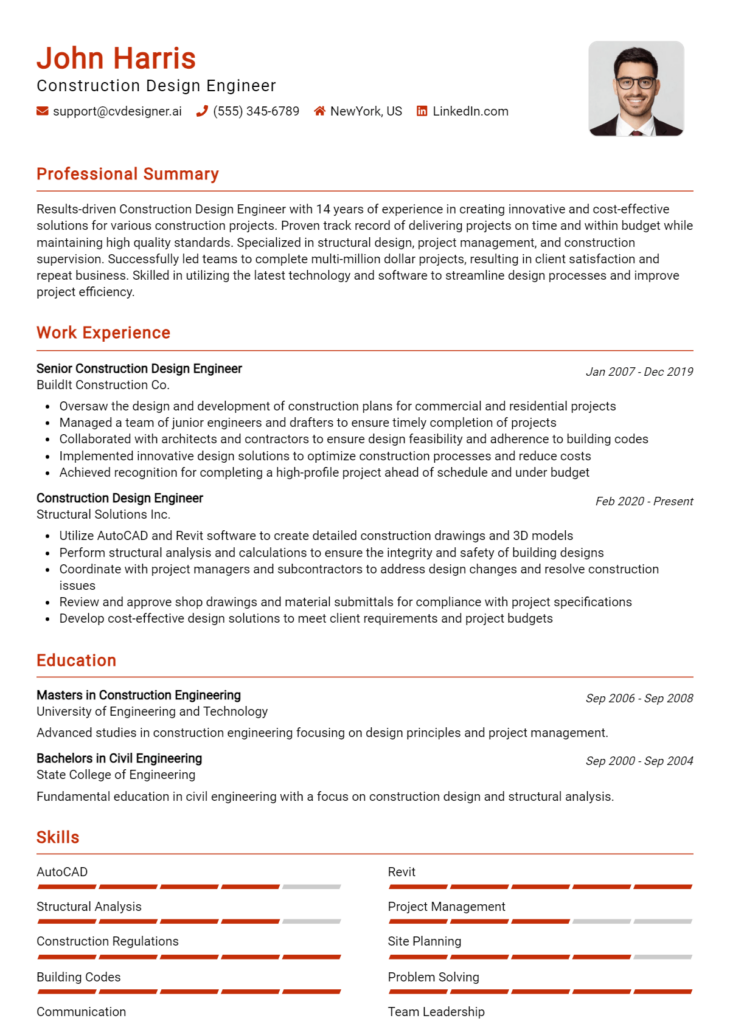BIM Engineer Core Responsibilities
A BIM Engineer plays a crucial role in bridging various departments, ensuring seamless collaboration between architects, engineers, and construction teams. Key responsibilities include developing 3D models, managing data workflows, and implementing BIM standards. Technical proficiency in software like Revit and AutoCAD is essential, alongside operational skills for project management and problem-solving abilities to address challenges. These competencies contribute significantly to organizational goals, making a well-structured resume vital for showcasing qualifications and attracting prospective employers.
Common Responsibilities Listed on BIM Engineer Resume
- Developing and managing detailed 3D models using BIM software.
- Coordinating with architects, engineers, and contractors to ensure project alignment.
- Creating and maintaining project documentation and drawings.
- Implementing BIM standards and protocols for consistency.
- Conducting clash detection and resolving design conflicts.
- Training team members on BIM tools and processes.
- Analyzing project data to improve workflows and efficiencies.
- Collaborating in multidisciplinary teams for integrated project delivery.
- Assisting in cost estimation and quantity take-offs.
- Updating models based on project changes and client feedback.
- Ensuring compliance with industry regulations and standards.
High-Level Resume Tips for BIM Engineer Professionals
In the competitive landscape of the BIM (Building Information Modeling) engineering field, a well-crafted resume is not just a document; it’s your first chance to make a lasting impression on potential employers. For BIM Engineers, your resume must convey not only your technical skills and expertise but also your unique achievements and contributions to past projects. It serves as a reflection of your professional journey and a showcase of how you can add value to future employers. This guide aims to equip you with practical and actionable resume tips tailored specifically for BIM Engineer professionals, ensuring your resume stands out in a crowded job market.
Top Resume Tips for BIM Engineer Professionals
- Tailor your resume for each job application by aligning your skills and experiences with the specific requirements outlined in the job description.
- Highlight relevant experience in BIM projects, clearly outlining your role and contributions to each project.
- Quantify your achievements by including specific metrics, such as project completion times, cost savings, or improvements in efficiency.
- Showcase your proficiency with industry-standard software and tools such as Revit, Navisworks, and AutoCAD.
- Include certifications and training related to BIM methodologies, software, and industry standards to demonstrate your commitment to professional development.
- Detail any collaborative projects with architects, engineers, and contractors to showcase your teamwork and communication skills.
- Utilize clear and concise language, focusing on action verbs to describe your experiences and contributions.
- Incorporate a strong summary statement at the beginning of your resume that encapsulates your expertise and career goals.
- Make use of bullet points for easy readability, ensuring key skills and accomplishments stand out.
By implementing these tips, you can significantly enhance your chances of landing a job in the BIM Engineer field. A well-structured resume that effectively showcases your skills, experiences, and achievements will help you attract the attention of hiring managers, allowing you to present yourself as a strong candidate in an ever-evolving industry.
Why Resume Headlines & Titles are Important for BIM Engineer
In the competitive field of Building Information Modeling (BIM), a well-crafted resume headline or title is vital for standing out to hiring managers. A strong headline captures attention immediately, summarizing a candidate's key qualifications in a succinct and impactful phrase. It serves as the first impression and can influence whether a recruiter decides to read further into the resume. Therefore, the headline should be concise, relevant, and directly related to the specific BIM Engineer position being applied for, effectively highlighting the candidate's core competencies and unique strengths.
Best Practices for Crafting Resume Headlines for BIM Engineer
- Keep it concise: Aim for one impactful phrase that encapsulates your expertise.
- Be specific: Tailor the headline to reflect the exact role and skills required for the BIM Engineer position.
- Use strong action words: Choose dynamic verbs that convey your expertise and accomplishments.
- Highlight key qualifications: Focus on your most relevant skills, certifications, or experiences.
- Avoid jargon: Use clear language that can be easily understood by all readers.
- Incorporate numbers: If applicable, include metrics or achievements that quantify your success.
- Stay relevant: Ensure your headline aligns with the job description and company needs.
- Reflect your professional brand: Convey your unique value proposition in the field of BIM.
Example Resume Headlines for BIM Engineer
Strong Resume Headlines
Results-Driven BIM Engineer with 5+ Years of Experience in Large-Scale Infrastructure Projects
Certified BIM Specialist Focused on Improving Workflow Efficiency and Collaboration
Innovative BIM Engineer Skilled in Advanced Modeling Techniques and Project Management
Weak Resume Headlines
BIM Engineer Looking for a Job
Experienced Professional in Engineering
Strong headlines are effective because they immediately convey the candidate's specialization and value proposition, making it clear why they are a suitable fit for the role. They highlight key strengths and accomplishments in a compelling manner, capturing the attention of hiring managers. In contrast, weak headlines fail to impress as they are vague and generic, lacking specificity and not providing any insight into the candidate's unique qualifications or abilities. Such headlines are easily overlooked and do not create a lasting impact on recruiters.
Writing an Exceptional BIM Engineer Resume Summary
A well-crafted resume summary is crucial for a BIM Engineer as it serves as the first impression for hiring managers, succinctly encapsulating the candidate's key skills, experience, and accomplishments. In a competitive job market, a strong summary can quickly capture attention, allowing the candidate to stand out among a sea of applicants. It should be concise, impactful, and tailored to the specific job being applied for, effectively highlighting the candidate's qualifications and relevance to the role in just a few sentences.
Best Practices for Writing a BIM Engineer Resume Summary
- Quantify Achievements: Use numbers and metrics to demonstrate your impact, such as project savings, efficiency improvements, or increased productivity.
- Focus on Key Skills: Highlight technical skills, software proficiencies (like Revit, AutoCAD, etc.), and relevant certifications that align with the job description.
- Tailor the Summary: Customize the summary for each application by reflecting the specific requirements and language used in the job posting.
- Keep It Concise: Aim for 2-4 sentences that effectively summarize your professional identity without overwhelming the reader.
- Use Action Verbs: Start sentences with strong action verbs to convey a sense of proactivity and accomplishment.
- Showcase Relevant Experience: Mention specific projects or roles that are directly related to the BIM Engineer position you are applying for.
- Highlight Soft Skills: Include essential soft skills such as communication, teamwork, and problem-solving that are vital for collaboration in BIM projects.
- Avoid Clichés: Steer clear of generic phrases and buzzwords that do not add value or specificity to your summary.
Example BIM Engineer Resume Summaries
Strong Resume Summaries
Results-driven BIM Engineer with over 5 years of experience in managing multi-disciplinary projects, leading to a 30% reduction in project delivery time through efficient coordination and advanced modeling techniques.
Detail-oriented BIM Specialist proficient in Autodesk Revit and Navisworks, successfully implementing BIM processes in a $10M commercial construction project, enhancing collaboration and reducing errors by 25%.
Innovative BIM Engineer with a proven track record of increasing project efficiency by 20% through the development of automated workflows and effective team leadership on large-scale infrastructure projects.
Dedicated BIM Coordinator with extensive experience in 3D modeling and clash detection, contributing to a $15M residential project that achieved a 15% cost savings through proactive issue resolution.
Weak Resume Summaries
Experienced engineer with knowledge of BIM technology looking for opportunities in construction.
BIM Engineer with skills in various software and a background in engineering projects.
The strong resume summaries are effective because they include quantifiable results, specific skills, and relevant project experiences that align closely with the role of a BIM Engineer. They demonstrate the candidate's value and impact within their previous positions. In contrast, the weak summaries lack specificity and measurable outcomes, making them less compelling and failing to distinguish the candidates from others in the field.
Work Experience Section for BIM Engineer Resume
The work experience section of a BIM Engineer resume is crucial as it serves as a testament to the candidate's technical expertise and practical application of Building Information Modeling principles. This section not only highlights the candidate's ability to manage teams effectively but also demonstrates their capacity to deliver high-quality products on time and within budget. By quantifying achievements and aligning past experiences with industry standards, candidates can present a compelling narrative that showcases their value and makes them stand out in a competitive job market.
Best Practices for BIM Engineer Work Experience
- Focus on quantifiable results, such as project cost savings or time reductions.
- Highlight specific technical skills used in projects, such as software proficiency or modeling techniques.
- Emphasize collaboration with cross-functional teams and stakeholders.
- Use industry-standard terminology and metrics to align with the expectations of hiring managers.
- Include leadership roles in projects to demonstrate management capabilities.
- Showcase innovative solutions implemented during projects that improved workflows.
- Detail your contributions in terms of project outcomes rather than just duties performed.
- Tailor descriptions to match the specific job requirements of the position you are applying for.
Example Work Experiences for BIM Engineer
Strong Experiences
- Led a cross-disciplinary team in the successful completion of a $5 million commercial project, achieving a 20% reduction in costs through effective resource management and innovative modeling techniques.
- Implemented a new BIM process that improved project delivery time by 30%, resulting in a more efficient workflow and increased client satisfaction.
- Coordinated with architects and contractors to resolve design conflicts in real-time, leading to a 15% decrease in rework and ensuring project timelines were met.
- Developed a training program for junior engineers that enhanced team proficiency in Autodesk Revit, contributing to a 25% increase in project output.
Weak Experiences
- Worked on several projects using BIM software.
- Helped with 3D models for various clients.
- Attended meetings and provided input on BIM processes.
- Assisted team members with their tasks as needed.
The examples categorized as strong experiences are impactful as they highlight quantifiable outcomes, demonstrate technical leadership, and reflect successful collaboration, making the candidate's contributions clear and significant. In contrast, the weak experiences lack specificity and measurable results, making them less compelling and failing to showcase the candidate's true value to potential employers.
Education and Certifications Section for BIM Engineer Resume
The education and certifications section of a BIM Engineer resume is crucial as it serves to highlight the candidate's academic background and commitment to the profession. This section not only showcases relevant degrees and industry-recognized certifications but also reflects the candidate's continuous learning efforts in a rapidly evolving field. By including pertinent coursework, specialized training, and certifications, candidates can significantly enhance their credibility and demonstrate their alignment with the job requirements, making them more attractive to potential employers.
Best Practices for BIM Engineer Education and Certifications
- Focus on relevant degrees in fields such as architecture, engineering, or construction management.
- Include industry-recognized certifications like Autodesk Certified Professional or buildingSMART certifications.
- List any specialized training programs that pertain to BIM software or methodologies.
- Highlight coursework that directly relates to BIM processes, modeling techniques, or project management.
- Be specific about the level of certification (e.g., basic, advanced) to indicate expertise.
- Keep the section organized and concise, prioritizing the most relevant information.
- Consider adding any ongoing education efforts or workshops attended recently.
- Use clear formatting to make it easy for hiring managers to scan this section quickly.
Example Education and Certifications for BIM Engineer
Strong Examples
- Bachelor of Science in Civil Engineering, XYZ University, 2021
- Autodesk Certified Professional: Revit for Structural Design, 2022
- Certificate in Building Information Modeling (BIM) from ABC Institute, 2023
- Completed coursework in Advanced BIM Project Management, 2020
Weak Examples
- Associate Degree in Fine Arts, DEF College, 2018
- Certification in Basic Computer Skills, 2019
- Diploma in Interior Design, GHI School, 2017
- Online course in Social Media Marketing, 2021
The strong examples are considered robust as they directly relate to the BIM Engineer role, showcasing relevant education and recognized credentials that enhance the candidate's qualifications. In contrast, the weak examples lack relevance to the BIM field, featuring outdated or unrelated qualifications that do not contribute to the candidate's credibility as a BIM Engineer. By providing clear and pertinent educational background and certifications, candidates can make a stronger impact on potential employers.
Top Skills & Keywords for BIM Engineer Resume
As a BIM Engineer, possessing the right skills is crucial for crafting a compelling resume that stands out to potential employers. A well-structured resume should effectively highlight both hard and soft skills that reflect your expertise and ability to collaborate in multifaceted projects. Employers are keen on candidates who not only understand the technical aspects of Building Information Modeling but also demonstrate strong interpersonal and problem-solving abilities. This combination of skills can greatly enhance your appeal in the competitive job market, showcasing your readiness to contribute effectively to a team's success. For more insights on essential skills and how to present your work experience, keep reading.
Top Hard & Soft Skills for BIM Engineer
Soft Skills
- Communication
- Team Collaboration
- Problem-Solving
- Time Management
- Adaptability
- Critical Thinking
- Attention to Detail
- Creativity
- Conflict Resolution
- Client Interaction
Hard Skills
- Proficiency in BIM Software (e.g., Revit, Navisworks)
- 3D Modeling
- Construction Documentation
- Building Code Knowledge
- Project Management
- Data Analysis
- Geographic Information Systems (GIS)
- Quantity Takeoff
- Virtual Design & Construction (VDC)
- Energy Analysis Tools
Stand Out with a Winning BIM Engineer Cover Letter
Dear [Hiring Manager's Name],
I am writing to express my interest in the BIM Engineer position at [Company Name], as advertised on [where you found the job posting]. With a robust background in Building Information Modeling and a passion for innovative design and engineering solutions, I am excited about the opportunity to contribute to your team. My experience in coordinating multidisciplinary projects and utilizing advanced BIM software, such as Revit and Navisworks, has equipped me with the skills necessary to enhance project efficiency and collaboration.
During my previous role at [Previous Company Name], I successfully led a team in the development of a large-scale commercial project, where I implemented BIM processes that resulted in a 20% reduction in project delivery time. By facilitating effective communication among architects, engineers, and contractors, I ensured that all stakeholders were aligned and that any potential conflicts were identified and resolved early in the design phase. My attention to detail and commitment to quality have consistently driven successful project outcomes, and I am eager to bring this dedication to [Company Name].
I am particularly drawn to [Company Name] because of your commitment to sustainable design and innovation in the construction industry. I admire your recent projects, such as [specific project or initiative], which resonate with my values and professional aspirations. I am confident that my technical expertise, combined with my ability to adapt to new technologies and methods, will enable me to make a meaningful impact on your projects.
Thank you for considering my application. I look forward to the opportunity to discuss how my skills and experiences align with the goals of [Company Name]. I am excited about the possibility of contributing to your esteemed team and helping to drive the future of BIM in your projects.
Sincerely,
[Your Name]
[Your Phone Number]
[Your Email Address]
Common Mistakes to Avoid in a BIM Engineer Resume
When crafting a resume for a BIM Engineer position, it's essential to present your skills and experiences effectively. However, many candidates make common mistakes that can hinder their chances of landing an interview. Understanding these pitfalls can help you create a more compelling resume that highlights your qualifications and aligns with industry expectations. Below are some prevalent errors to avoid:
Ignoring Keywords: Failing to include relevant keywords from the job description can lead to your resume being overlooked by Applicant Tracking Systems (ATS) that many companies use.
Vague Job Descriptions: Providing unclear or generic job responsibilities can make it difficult for hiring managers to assess your specific skills and contributions. Be detailed about your role in projects.
Lack of Quantifiable Achievements: Not including measurable outcomes or accomplishments can weaken your resume. Use metrics to demonstrate how your work positively impacted projects, such as time saved or costs reduced.
Overly Technical Language: While it’s important to showcase your technical expertise, using excessive jargon or acronyms without explanation can alienate readers. Strike a balance between technical terms and readability.
Neglecting Soft Skills: Focusing solely on technical skills can create an incomplete picture. Highlighting soft skills, such as communication and teamwork, is crucial since BIM engineers often collaborate with various stakeholders.
Poor Formatting: A cluttered or unprofessional layout can detract from your qualifications. Use clear headings, bullet points, and consistent font styles to enhance readability and organization.
Omitting Certifications and Training: Not mentioning relevant certifications, training, or professional development can be a missed opportunity to showcase your commitment to the field and continuous learning.
Not Tailoring the Resume: Submitting a generic resume for multiple job applications can diminish your chances. Customize your resume for each position, emphasizing the experiences and skills that align with the specific job requirements.
Conclusion
In summary, the role of a BIM Engineer is crucial in the architecture, engineering, and construction industries. Key responsibilities include creating detailed 3D models, coordinating with various teams, and ensuring that projects adhere to technical specifications and regulations. The importance of collaboration, communication, and an understanding of software tools like Revit and AutoCAD cannot be overstated. As the demand for skilled BIM Engineers continues to grow, staying updated with the latest technologies and best practices is essential for career advancement.
Now is the perfect time to review your BIM Engineer resume to ensure it reflects your skills and experiences accurately. Utilize resources like resume templates, which can provide a professional layout, and the resume builder to create a customized resume that stands out. Explore resume examples for inspiration and ensure your cover letter complements your application by using cover letter templates. Take action today to enhance your resume and increase your chances of landing your desired BIM Engineer position!

